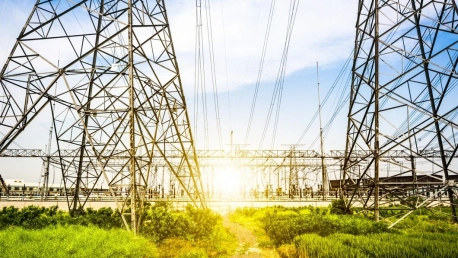The transition to renewable energy sources is reshaping the dynamics of power grid management due to the fluctuating nature of wind and solar energy. Unlike the steady flow of energy from traditional sources, renewables are subject to the vagaries of the weather, creating a mismatch between the availability of supply and the consistent demand for electricity. This unpredictability challenges the stability of the power infrastructure, requiring enhanced strategies to ensure that the grid can adapt to the variable input from renewable resources. Utilities and governments must therefore innovate and strategize to synchronize the erratic influx of power with consumer needs, maintaining a balanced and reliable energy system. The quest for green energy solutions demands a re-engineering of grid management to address the complex demands of a changing energy landscape.
Demand Response: Syncing Consumption with Supply
The Role of Demand Response in Modern Grids
Demand Response (DR) is increasingly vital for stabilizing the electric grid, especially during peak demand or when input from renewable sources like solar or wind is minimal. It operates by adjusting the electric consumption habits of consumers to better match the availability of power supply. For example, DR strategies may involve incentivizing households and businesses to utilize energy-intensive appliances at times when renewable production is high, supporting the integration of green energy while easing the burden on the grid infrastructure. This approach not only helps to prevent power outages but also promotes efficient energy use and contributes to a sustainable energy ecosystem. DR’s role is becoming more pronounced as the energy landscape evolves and the penetration of intermittent renewable resources increases, making grid harmony a crucial aspect of modern energy management.
Overcoming Grid Reliability Challenges with DR
The 2020 California power outages illustrate the challenges of an overwhelmed electricity grid. To avoid such instances, where power generation can’t meet the demand, demand response (DR) plays a critical role. DR encourages users to alter energy usage during peak times, offering a cost-effective approach to grid stability without the need for expensive and environmentally detrimental infrastructure expansion.Successful DR hinges on instant communication between power providers and consumers, fostering joint efforts to reduce strain on the grid. When implemented correctly, DR not only averts blackouts but also enhances grid resilience and efficiency. As energy demands continue to rise, the integration of DR programs is proving essential, enabling a more sustainable balance between energy supply and consumption. These initiatives ultimately benefit both the providers’ ability to manage loads and the consumers’ experience through reliability.
Sumitomo Electric’s Innovative Energy Management
Pioneering Demand Response Technologies
Sumitomo Electric has carved out a leading role in demand response technology with its pioneering demonstration in 2015. The company has unveiled a cutting-edge energy management system capable of real-time modifications to energy consumption patterns. At the heart of this system lies a sophisticated coordination of solar power, battery storage, and energy usage to preserve the power grid’s equilibrium. This integration is critical as it demonstrates the potential to utilize inconsistent renewable resources efficiently while ensuring a consistent electricity supply. Sumitomo Electric’s innovation plays a significant role in the quest for a sustainable energy future, highlighting the potential of technology in adapting to the fluctuating availability of renewable energy and contributing to a reliably powered world. The company continues to refine this technology, aiming to optimize energy savings and grid stability.
Expansion into Community-Wide Energy Systems
Sumitomo Electric has escalated its energy management focus from individual systems to a holistic community level, spearheading the deployment of Community Energy Management Systems (CEMS). By weaving together sophisticated elements from the automotive industry, IoT, and Artificial Intelligence, Sumitomo is pioneering comprehensive energy solutions. These solutions extend past the confines of single households to encompass entire communities, ensuring optimized energy usage and production. As communities face the intermittent nature of renewable energy sources, such an integrated approach is vital to the evolution of a renewable energy-based society, providing a synergized, community-centric energy strategy. Sumitomo’s initiative aligns with global sustainability goals by offering a flexibly coordinated response to energy demands, thereby reinforcing the collective movement towards cleaner, more efficient energy use.









